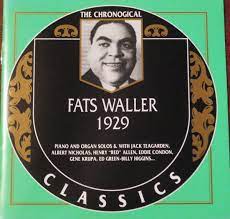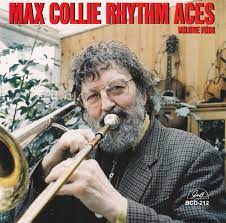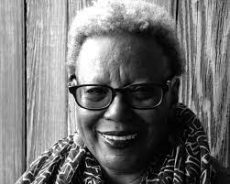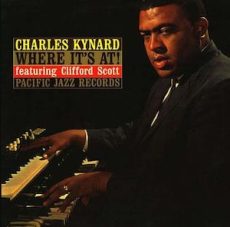
The Jazz Voyager
Flying West to visit once again that city by the bay and upon landing heading to go down Lombard Street, then hop on a cable car to Fisherman’s Wharf, and take a walk through Golden Gate Park. The ultimate destination for this Jazz Voyager is the 700 seat SFJazz Center’s Miner Auditorium to be in the audience to catch another amazing concert. Rain gear will be required as the weather will be warmer than Michigan but inclement off and on during my stay.
This go round I will be witnessing the vocal talents of the venerated Grammy winning vocalist Dianne Reeves. Whether putting a personal stamp on lilting Brazilian standards, exploring contemporary fare by Ani DiFranco and Stevie Nicks, interpreting American Songbook classics by the Gershwin, Porter, and Berlin, or breathing fresh life into holiday chestnuts. This lady always gets to the heart of a song. Had it not been more than two generations having passed since jazz stars took on aristocratic titles, Dianne Reeves would surely be known as The Queen.
The venue is located at 201 Franklin Street, San Francisco, California 94102. For those who are requiring more information go to https://notoriousjazz.com/event/dianne-reeves.
More Posts: adventure,club,genius,jazz,music,preserving,travel,vocal

Daily Dose Of Jazz…
Henry “Bass” Edwards was born on February 22, 1889 in Atlanta. Georgia and by 14 he began playing in local Odd Fellows’ Band, and subsequently studied music at Morris Brown College and Morehouse College.
During the first World War he played in the U.S. Army Bands, including a spell with Lt. J. Tim Brymn’s 350th FA. Band. From 1919 to 1920 he played in Philadelphia, Pennsylvania with various concert orchestras, including working with Sam Wooding.
1921 saw him playing for the next four years with several dance bands in the Philadelphia-Atlantic City, New Jersey area. In mid-1925, Bass joined Duke Ellington, but only remained with the band until spring 1926. He then joined Leon Abbey in New York City and toured South America during the spring 1927. Returning to the city, he joined the Allie Ross Orchestra, which played for the Blackbirds shows.
In 1929, he joined Noble Sissle’s band on brass bass, and sailed to Europe with him. On his return Edwards worked with Fats Waller, James P. Johnson, and Eubie Blake, before rejoining Allie Ross for the Rhapsody in Black show. His last major jazz position was with the Charlie Matson Orchestra during 1933. He then worked mainly on string bass with various light and classical orchestras.
Tubist and bassist Bass Edwards died in New York, New York on August 22, 1965.

Daily Dose Of Jazz…
John Maxwell Collie was born on February 21, 1931 in Melbourne, Australia. In 1946 he first heard professional jazz listening to Graham Bell’s lunchtime concerts at The New Theatre Melbourne. By 17 he was playing with a local band and shortly after leading it.
When he received the invitation by cable to take the trombone chair in the Melbourne New Orleans Jazz Band that was on tour in Europe, Max accepted and in 1962 arrived in England. He toured Europe until the band went back to Australia a year later, however, he decided to stay and joined the London City Stompers, becoming leader after a year. In 1966 he formed Max Collie’s Rhythm Aces and that band, notwithstanding the collapse of the UK jazz scene flourished.
The group released their first record in 1971 and in 1975 they won the World Championship of Jazz in traditional jazz against fourteen competing North American jazz bands in Indianapolis, Indiana.
He would go on to tour Sweden, Denmark, Finland, Norway and Japan and create a theater show. This show, Max Collie’s New Orleans Mardi Gras, which included Ken Colyer and Cy Laurie, turned out to be the most successful jazz show in British jazz history. Trombonist Max Collie died on January 6, 2018, at the age of 86.
More Posts: bandleader,history,instrumental,jazz,music,trombone

Jazz Poems
THE BLUES OF THIS DAY The blues of this day are as elegant and as sad as the minor thirds and we all try to sing it. What we want is to be brass The horn-scratched voice blown through. Valves as golden as his. Lord as crazy sex or first real heartbreak. It was always his back slightly bent away from all of us who adored him, gazing across his shoulders as the band jumped into the party one solo at a ti Or they could be rocking way off-ke going as far away from the melody as Venus to Mars. Funk can be as easy as t getting together in the dark. And as hard as the breaking light that catches the throat of sated lovers, the morning after. The talk the night before by the last of his men who knew the way of the world and then some, about Miles and his two steps ahead of the century like the first Black man to leave the Delta humming I gotta go, but I can’t take you. I gotta go, but I can’t take you. If you want to follow, then do what you want to do. Patricia Spears Jonesfrom Jazz Poems ~ Selected and Edited by Kevin Young
More Posts: book,classic,collectible,history,jazz,library,poet

Daily Dose Of Jazz…
Charles Kynard was born in St. Louis, Missouri on February 20, 1933 and first played piano then switched to organ and led a trio in Kansas City. The trio included Tex Johnson on flute and saxophone, and Leroy Anderson on drums.
In 1963, he settled in Los Angeles, California and his band featured guitarists Cal Green and Ray Crawford, drummer Johnny Kirkwood. Between 1963 to 1973 Charles recorded ten albums as a leader, and ten albums as a sideman with Johnny Almond, Paul Jeffrey, Les McCann, Blue Mitchell, Howard Roberts, Clifford Scott, Sonny Stitt, and Tom Waits.
Organist Charles Kynard died on July 8, 1979.
More Posts: history,instrumental,jazz,music,organ




